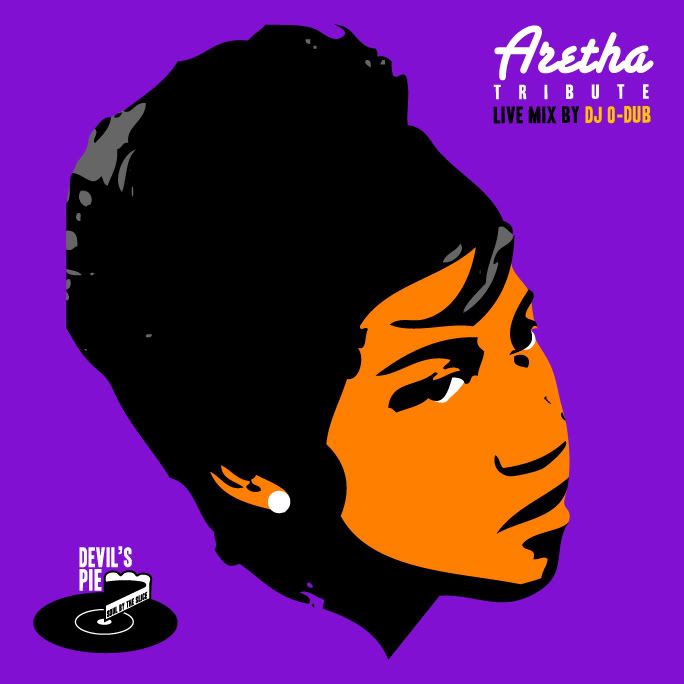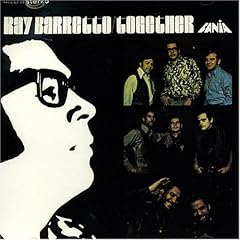ANOTHER M.A.N./SOUL SIDES COLLABO: GET INTO SOMETHING
posted by O.W.

A Soul-Sides/MAN Black History Month Collaboration
Written by Mark Anthony Neal
The thing that has always struck about the Soul music of the late 1960s and the 1970s was not simply that some of it aimed to be political but that this was music that took seriously the challenges of being black in America. When cats weren’t being “black and proud” that needed to find ways to pay the bills, keep the peace at home, provide for aging elders, do the laundry, toss jacks with the babies on the floor and any number of things that make for the everyday that is this thing called life.. It’s not that this era had its lack of party and bullshit—can Rufus Thomas get some love?—but the music of this era simply had a gravitas about it. This was music that was a product of an era that was largely unprecedented—some semblance of social justice for the former shackled and enslaved—where folk could really take the time to imagine a life well lived.
CLICK HERE TO CONTINUE READING...
1. Roberta Flack & Donny Hathaway: Be Real Black For Me
From Roberta Flack & Donny Hathaway (Atlantic, 1972)
Culled from their first full-length collaboration Roberta Flack & Donny Hathaway rings like the Breaking Bread tome that Cornel West and bell hooks would craft nearly two decades later. Just some grown ass folks talking about some grown-ass ish. Though some might read “Be Real Black” as some essentialist trap that discourages inter-racial relationships on the one hand and then ups the ante on “real” blackness on the other, the emphasis here is on the “be real”—the blackness was assumed. Flack went on to become a major star in the years after this recording—on par with Carole King and Joni Mitchell in that singer-song-writer sense—and Hathaway, unfortunately became another entry into the Soul-Man tragedy.
2. Stevie Wonder: Heaven Help Us All
From Signed, Sealed, Delivered (Tamla, 1970)
Innervisions, with the brilliant “Living for the City” was seen as the great breakthrough in Stevie Wonder’s political consciousness, but the seeds were already there on discs like Music on My Mind, Talking Book and even Signed, Sealed and Delivered, which is where “Heaven Help Us All” is drawn from. Recorded during the midst of the madness that was the late 1960s and early 1970s, Wonder pleads the cause for all involved, especially the people with “their backs against the wall.” Brilliant in its simplicity—majestic for its insight—Wonder delivered a prayer in what would be the opening salvo of what would become one of the most extraordinary commercial and critical runs ever experienced by a pop artist.
3. Esther Phillips: Home is Where the Hatred Is
From From a Whisper To a Scream (Kudu, 1972).
Also on Home Is Where the Hatred Is.
The song is Gil Scott-Heron’s—an unfortunate premonition to the illicit drug dramas that would dog hip-hop’s god-father griot for years to come. Esther Phillips knew quite a bit about those dramas having been on the road since she was a teenager in the late 1940s—It’s like Phillips’ version of “Home is Where the Hatred Is” gets at a core that Scott-Heron wasn’t even ready to deal with. Always well regarded by serious fans of rhythm and blues, Phillips’s CTI recordings in the 1970s, including From a Whisper to a Scream, where “Home…” is taken from, helped introduce her to a broader audience. And of course it helped that her version of “Home…” sounds like the soundtrack to a Blaxploitation film yet to be made.
4. Aretha Franklin: Precious Lord/You’ve Got a Friend
From Amazing Grace (Atlantic, 1972)
Aretha Franklin’s Amazing Grace is a singular achievement: a pop-diva at her peak, the Queen of Soul in full regalia, taking her loyal subjects back to her roots—and indeed the roots of the revolution—not on the industry’s terms, but in the spirit of folk like the ailing Clara Ward (who sat in a front pew) and a still-on-his journey Thomas Dorsey. It was Carole King who helped Ms. Franklin achieve cross-over success via the memorable “Natural Women”, but in “this house, on this morning” Ms Franklin wanted folk to remember that she was a product of “this house” and the music that is still its foundation even as it brings the house down every Sunday morning. So “Precious Lord/You’ve Got a Friend” brings Carole King in conversation with Thomas Dorsey (the once and famous “Georgia Tom”) and it a quintessential American moment.
5. Isaac Hayes: They Long to Be (Close to You)
From Black Moses (Stax, 1971)
And he parted the Soul Seas…Too often though, folk reduce Isaac Hayes’s legacy to the Shaft soundtrack and yeah that’s a hell of a legacy, one that earned the man an Oscar. Before Shaft Hayes genius was already established on recordings like Hot Buttered Soul and …To be Continued. Anticipating folk like Gene Page, Barry White, and Paul Riser, Hayes in the late 1960s and early 1970s laid down the foundations for what could only be called Symphonic Soul. And then at the height of his fame he made his biggest cultural statement: Black Moses, a double-album dissertation on the sound of Soul and one that we too often forget when the conversation turns to Stevie Wonder’s Songs in the Key of Life or Prince’s Sign o’ the Times. So Hayes takes the wonder-ist (as in the bread) of white-bread pop—the Carpenter’s “They Long to Be (Close to You)—and transforms it into nine-minutes of Memphis drenched sunrise, replete with beats that crate-diggers would be mining for decades after.
6. The Isley Brothers: Get Into Something
From Get Into Something (T-Neck, 1970)
Mr. Biggs (aka Ronald Isley) is just one of the manifestations of the Brothers Isley—a natural progression from the baby-making era of “Between the Sheets” (1983) and “Spend the Night” (1989). Somewhere around 1975 the Brothers Isley—who have been doin’ this thang for damn near 50 years—found their niche, cliché as it may be, in smooth grooves like “For the Love of You”, “Voyage to Atlantis” and “Footprints in the Dark”. For those who weren’t down with the brothers from the T-Neck days (and before) the 3+3 era of “That Lady” and “Summer Breeze” is nothing short of foreign concept; The Brothers Isley as rockers? For my money it was that period between “It’s Your Thang” (their breakthrough single from 1969) and 3+3 that was most interesting as you can literally hear the brothers push the boundaries of expectation. And thus you get the 7-minutes of sipping-syrup funk that is “Get Into Something” decades before DJ Screw drips off the lips of the H-Town faithful. “Get Into Something” captures that moment when there is nothing but expectation and little care about what it was supposed to look like—just get into sumthin’.
7. Billy Paul: This is Your Life
From Going East (USA Philadelphia Int'l, 1971)
Jimmy Webb—he of 1960s white-bread complexity--wrote the song. I first heard the song via a version by Norman Connors sung so sweetly by Eleanor Mills. I first heard Billy Paul’s version on MLK Day (‘86’ or ’87) when ‘BLS’s Franklie Crocker (the “Chief” Rocker) mixed the song’s intro behind the oratory of MLK. It would be years before I would track down the vinyl to Going East (1971)—a gem of an album Paul released before the soiree with “Mrs. Jones”. Paul is pictured with the still lovely Nancy Wilson on the back jacket of Going East—it was meant as an introduction of sorts. Tracks like “Love Buddies” (a real “Quiet Storm” classic), “There’s a Small Hotel” and the aforementioned “This is Your Life” captured Paul in his element
8. The Emotions: Peace Be Still
From Wattstax (Stax, 1972)
The Emotions were one of the many acts invited to perform at Wattstax, but due to scheduling conflicts the trio was forced to perform in a local church in Watts. “Peace Be Still” was a composition written by the legendary James Cleveland, who was at the peak of his fame and influence when The Emotions took on his baby. Though Cleveland wasn’t exactly long-in-the-tooth this performance has the feel of the passing of a torch—the old guard of the Civil Rights era giving way to the first generation Soul Babies. The “Country Preacher” (Rev. Jesse Jackson) can be heard in the background throughout grunting and groaning encouragement to the sisters. It would be a few years before The Emotions would have any real commercial success, via “The Best of My Love” (1977) and their galactic collaboration with Earth, Wind and Fire on “Boogie Wonderland” (1979).


















 People sometimes write to ask what I use to help put together Soul Sides and I thought I should give ample credit to the various software programs that I heavily depend on. Keep in mind: I'm a Mac guy so some of these won't apply to PC folk (too bad for you):
People sometimes write to ask what I use to help put together Soul Sides and I thought I should give ample credit to the various software programs that I heavily depend on. Keep in mind: I'm a Mac guy so some of these won't apply to PC folk (too bad for you):










